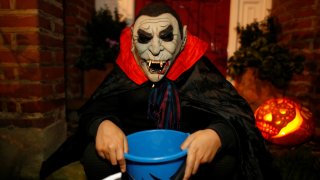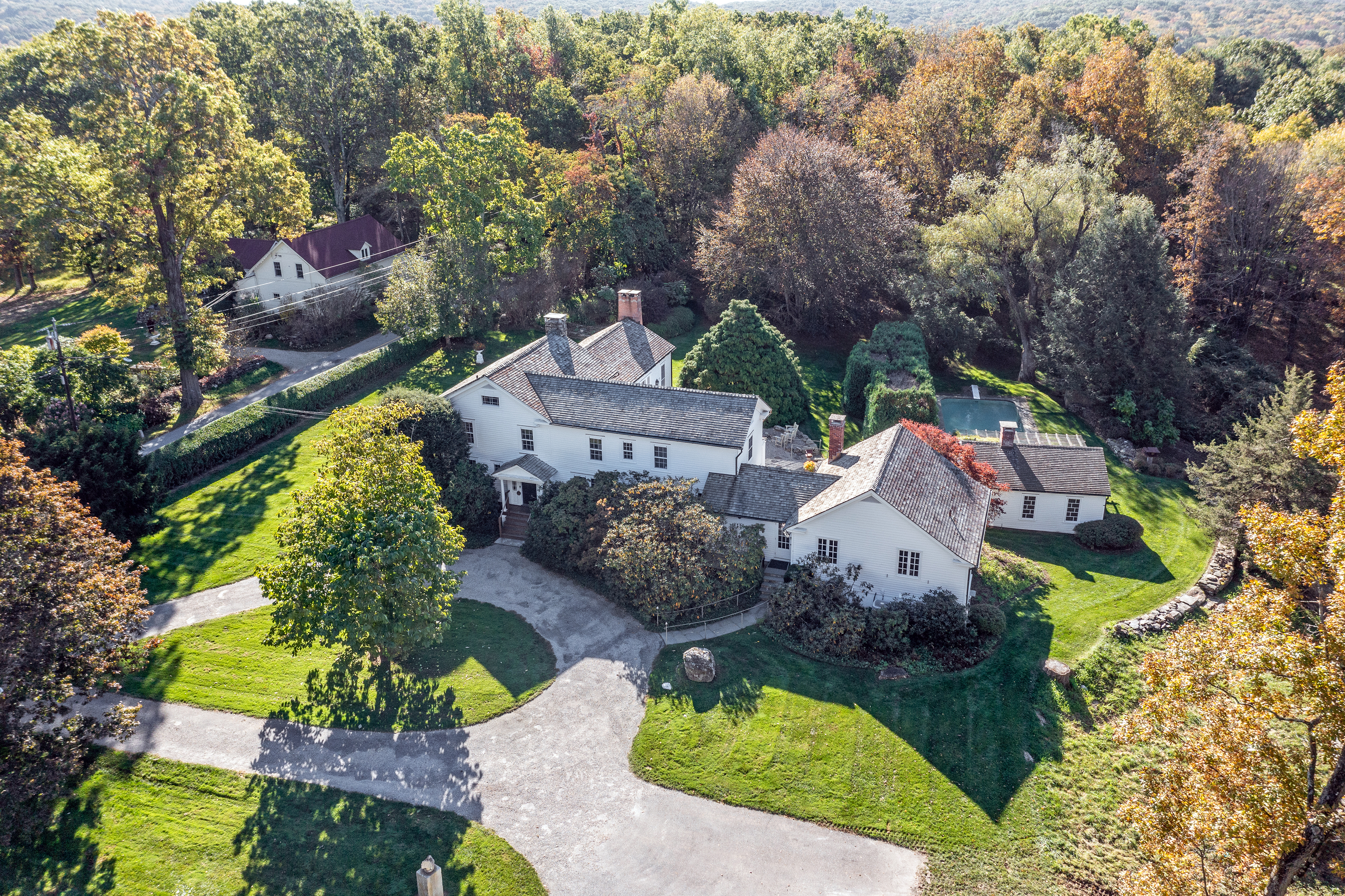
Vampires are literally everywhere — and we aren't just talking about movies, TV shows and books either.
No, vampires, the kind that legends are built on, the kind that drink blood, can be found worldwide.
"The blood-drinker is the one found in six of the seven continents, there's not a doubt at all," Jonathan Weiss, folklorist, historian and founder of Johnathan Weiss Tours in New Orleans told TODAY.
Get New England news, weather forecasts and entertainment stories to your inbox. Sign up for NECN newsletters.
So, are vampires real? It's possible.
According to Weiss, vampires exist in different forms in different cultures and countries, but the concept of bloodsucking creatures, like the ones we dress up as on Halloween, have been around for centuries.
“If you strip down folklore and just come up with a standard set of facts, vampires very well could be real,” Weiss said.
The Scene
That said, there are people who drink blood — just like vampires. But don’t panic, for the most part, they're not the sort to roam the streets looking for unsuspecting victims like they do in horror movies.
To get to the truth about vampires, we went straight to the experts — and what they told us might just change everything you thought you knew about the undead.
The history of vampires
The idea of vampire-like creatures feasting on human blood has been around for centuries and gained foothold in Eastern Europe, according to Joseph Laycock, professor of religious studies at Texas State University.
And while vampire folklore isn't new, the word “vampire” is. It first appeared in writing in the 1700s but Laycock told TODAY the term was used to describe price-gouging merchants rather than bloodsucking monsters.
In 1819, vampires became mainstream when John William Polidori wrote “The Vampyre,” a fictional story taken from the story of Lord Byron. It's the first of its kind to make vampires seem aristocratic and seductive, not unlike Byron himself.
Nearly 80 years later, Bram Stoker published "Dracula." Based on Vlad the Impaler, the real-life Romanian prince with a thirst for bloody warfare, Stoker's Count Dracula is a far cry from Byron's sexy, womanizing vampire. “He has hairy palms; he has bad breath and he’s more like a corpse," Laycock said.
The modern-day vampire that most of us relate to comes from the 1931 film “Dracula” starring Bela Lugosi. And while Bram Stoker gets a writing credit, the film is actually based on a 1920s stage play adapted from the Bram Stoker novel and not the book itself.
Famous vampires in pop culture
Bela Lugosi’s “Dracula” set the bar for all other vampire movies. The black-and-white movie established Dracula as a wealthy, debonair vampire whose immortal kiss is desirable instead of deadly. For the most part, it’s how many people perceive vampires today.
Since then, however, there have been plenty of vampires in books, movies and TV shows to feed our appetite. Bram Stoker’s "Count Dracula" remains the most enduring and in 1992, the book was made into a film starring Gary Oldman, Winona Ryder and Keanu Reeves.
“The Lost Boys” is another cult classic. Both terrifying and campy, the 1987 film is about a gang of murderous vampires that take over a fictional California beach town.
Anne Rice’s novel “Interview with the Vampire” was turned into a big screen feature in 1994 and caused quite the stir after Tom Cruise and Brad Pitt were cast as beloved vampire characters, Louis and Lestat.
Along with the serious and scary vampire portrayals, we've also seen a lot of funny takes on these bloodsucking creatures. There's “Buffy the Vampire Slayer,” the 1992 film about a teenage vampire hunter. It was eventually turned into a long-running TV series with Sarah Michelle Gellar playing Buffy.
The 2014 mockumentary “What We Do in the Shadows” chronicles the lives of vampire roommates and their mundane battles over whose turn it is to take out the garbage or throw away dead bodies. In 2019, the movie was turned into a TV series with the same name.
You didn’t think we forgot about “Twilight,” did you? The bestselling Stephanie Meyer book series about a high schooler who falls in love with a vampire went on to sell hundreds of millions of copies. In 2008, the first of five blockbuster movies based on the book series was released, leading to a whole new generation of vampire (or, well, Edward Cullen) fans.
So, are vampires real?
If you consider people who drink the blood of others for pleasure, then the answer is yes.
A 2015 survey conducted by the Atlanta Vampire Alliance have found that there are at least 5,000 people in the United States who identify as real vampires.
Although many people with blood fetishes actually call themselves "sanguines," others identify as vampires and, like the fictional creatures, avoid sunlight and drink human blood from donors.
Psychic vampires feed in a completely different way.
"They steal the energy off the living," Weiss said. “Some people just don’t create energy that people normally make for themselves." As a result, they they take it from other people to feel complete.
Colin Robinson from "What We Do in the Shadows" made psychic vampires more relevant in pop culture — although not all psychic vampires can deliver deadpan humor and corny jokes like he can.
Where — and how — can you find vampires?
Blood-drinking vampires can be found on six of the seven continents, according to Weiss. "It seems to be a worldwide thing and there are different forms, different cultures, different countries."
While it's hard to know exactly where vampires live, nearly everyone agrees that New Orleans is as good a place to start. "The idea of vampires in New Orleans is a very, very old concept," Weiss said. Believed to have been built on cursed ground, New Orleans has long been known as a city steeped in mysticism, voodoo and the occult.
For that reason, Weiss says it makes sense that vampires, or at the least the idea of them, would take root and find "fertile ground to grow in New Orleans."
New Orleans is also the backdrop of "Interview with the Vampire," which Laycock says had a huge influence on vampire subculture after its release in 1976.
“I always say New Orleans smiles at you but never shows its teeth, because if you saw its teeth you’d probably never come back again," Weiss said.
This story first appeared on TODAY.com. More from TODAY:



